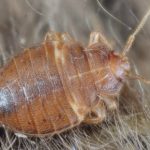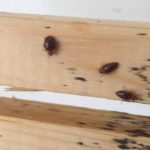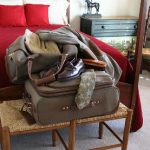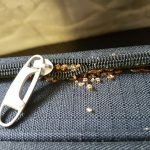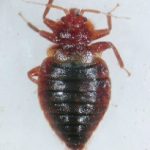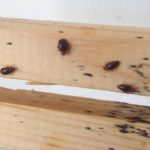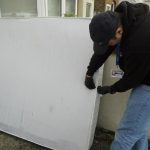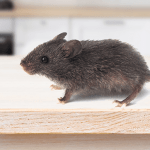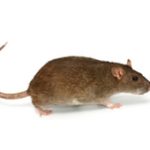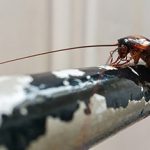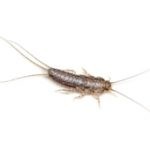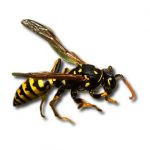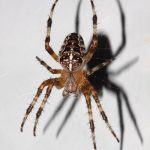How to Check For Bed Bugs
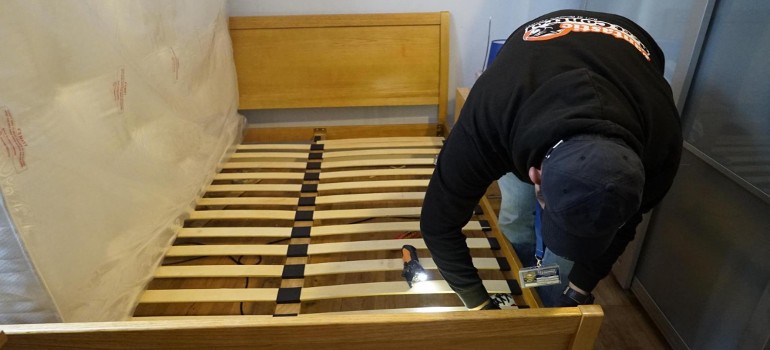
Checking your place for bed bugs is the first step of the battle with health-threatening bugs. The infestation spreads like wildfire, for this reason, they should be located and eradicated as soon as possible. We advise anyone who’s dealing with bed bugs, to minimise the service costs by taking action fast.
Minor infestations, though, are much harder to stop on time. When the bed bugs are low in number, they are often hiding very well and are hard to find unless you have been trained to do just that. Bed bugs are also easily mistaken for other bugs such as carpet beetles, which may also lead to confusion about what pest you’re dealing with.
Misidentifying bed bugs gives them more time to spread on other premises, this makes their extermination much harder and a lot more expensive.
How to Check for Bed Bugs at Home
Checking for bed bugs early is crucial to prevent a minor issue from escalating into a significant infestation.
Are Bed Bugs Difficult to Find?
Because they are tiny, roughly the size of an apple seed, and adept at hiding in confined areas, bed bugs can be challenging to locate. They are much more difficult to notice during the day since they are nocturnal, meaning they are most active at night. The strongest markers of an infestation, however, are frequently the symptoms they leave behind.
Bed Bug Signs
Common signs that can let you know if you have bed bugs are easy to notice, as long as you spend some time searching for them at the right place while using the right tools. Look for any of the following:
- Bed bug bites
- Rusty or reddish stains on the sheets or mattresses
- Dark spots
- Bed bug eggs and eggshells
- Bed bugs skin
- Live bed bugs
- Musty odours
Read more: What Do Bed Bugs Look Like to the Naked Human Eye?
Main Areas to Check For Bed Bugs
The fastest way to check for bed bugs is to inspect the most common hiding spots, focusing on signs of their presence rather than the bugs themselves.
Before contacting a pest control company, try to make sure it is indeed bed bugs you’re dealing with at home. To do this, begin an inspection from the premises where people sleep and move to the rest of the areas in the property.
- Use a flashlight and magnifying glass to check along the seams, folds, and tags.
- Look in the cracks and joints of wooden frames and behind the headboard.
- Examine your sheets, pillowcases, and blankets for blood stains or excrement marks.
- Check drawers
- Inspect the wardrobe and the clothes inside
- Take a look at places with scarce access to sunlight during the day
- Inspect power outlets. In case the property is rented, better contact the landlord and inform him of the bed bugs.
- If you have a carpet – check the area where the carpet meets the wall – it is the spot, most likely to see any bed bugs.
Visit our Pest Inspection page
Not So Popular Hiding Places
These areas are less prone to bed bugs infestation, but do not miss checking them out:
- Lamps and alarm clocks
- Jewellery containers
- Cardboard boxes
- TVs
- Desktop computers
- Books and other papers
- Inside dropped ceiling
What to do in case of a bed bugs infestation?
- Pull the bed away from the wall (this prevents bed bugs from spreading further)
- Collect all clothes, bedding and items stored under the bed. Put them in a dryer for about 20 minutes – the hot air (over 56 °C) will kill live bed bugs and will also exterminate eggs and larvae, they even start dying at 45°C (113°F).
When you remove it from the dryer, isolate the clothes in sealed bags to prevent bed bugs from getting on them again.
- Vacuum the area around the bed and the corners of the room.
- Install a box spring cover.
- Remove as much clutter as possible – this makes the pest exterminators’ job much easier.
- Continue vacuuming and washing the bedding regularly while the professionals treat the rooms on your property.
To make sure the bed bugs are completely eradicated, leave the treatment to a bed bug exterminator.
Check also: How to prepare for bed bug heat treatment
What not to do when you dealing with bed bugs?
- Do not use any pesticides. We always advise people against the use of such products as they might turn out to be very harmful when not used properly. In addition to this, there are many pesticidal products with an unclear origin and no instructions on the box.
- Avoid throwing away infested furniture. Better let the pros treat them. Thus, you will prevent the infestation from spreading in both your home and whoever decides to adopt your old sofa.
- Don’t be afraid of disease transmission. Bed bugs are not known for transmitting any life-threatening diseases.
- Do not apply any pesticide products to your body. There aren’t any specialised insect repellents against bed bug, suitable for application on the skin.
Check also:
Pest Control When Renting: Who’s Responsible?
How to Check Hotel Rooms For Bed Bugs?
Most of the domestic bed bugs infestations happen because people bring the pest back home from hotel rooms. This can be easily avoided by checking your hotel room for bed bugs the moment you arrive.
Hotels and restaurants are responsible for the safety of public health. The management in this type of business is obliged to control and prevent contamination of food and pest-borne diseases transmission inside the premises.
Check the Room Furnishing
- Closely inspect the mattress and the box spring. Probe the headboard as well. If it’s attached to the wall, try to take a look behind.
- Proceed with inspecting furniture, such as sofa and upholstery
- Do not forget nightstands and dressers – they are least likely to be infested but should not be ignored during the inspection.
Check Your Items
- Inspect your luggage, if there are traces of bed bugs in it, isolate all clothes and items in a plastic bag, and seal it perfectly. Do not unpack until you have a clear plan of how all items will be treated.
- Treat your suitcase. If the luggage inside has been infested, this means there are bugs in the suitcase as well. Vacuum all clothing and items from the suitcase. Treat it with heat or wash it before bringing it back home.
- Check your shoes for bed bugs – it’s unlikely to see any but some of the bugs can enter inside in an attempt to hide.
Additional tips
- Notify the hotel desk immediately if you find any bed bugs. This means there might be other hotel rooms with the same problem. The hotel management will hopefully take immediate actions to schedule a pest treatment.
- In need of an additional stay in the same hotel, ask the desk to change your room with one that is away from the infested hotel room. The best option is to take a room on a different floor.
Professional pest control service
Book an expert and get rid of the infestation in your property.
How to Check For Bed Bugs in Luggage?
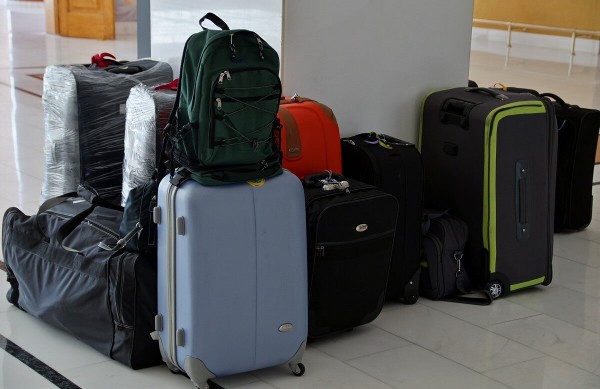
Check the luggage right after you get back home. Do not delay this at any cost. When you arrive at your place, remove the whole luggage from your suitcase and place it on the floor. Don’t do it on a carpet. You won’t be able to see the bugs and some may escape without being noticed.
Do it away from your bedroom with great care of preventing an infestation. Separate the items that may be treated with heat from those that can be frozen, in different bags.
When you’re done with this, continue with a close inspection of the suitcase. Use a flashlight to make a careful revision of the seams, folds and pockets of your suitcase. Look for tiny bed bug eggs and living insects. If there is any insect, vacuum the suitcase in an attempt to remove some of the bed bugs. Use this comprehensive guide on how to clean your suitcase when you’re done with the inspection of the luggage.
Read more: How to Protect Your Luggage from Bed bugs While Travelling?
Other Places to Check For Bed Bugs
How to Check Furniture For Bed Bugs
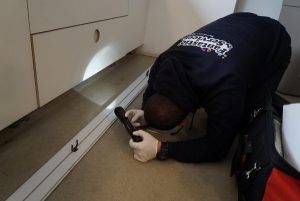
When the bed bugs’ population hits an all-time high, they are noticeable as they are more. They infest many items, mostly furniture, people often ignore checking their furniture. Some even move infested items to other premises. This makes the infestation almost impossible to deal with as it spreads even more.
To prevent this nightmare, read our advice on how to check the furniture for bed bugs activity and do your own check. It will be helpful even if you have to call a pro in the end. The information you’ve gathered will even make their job easier as they will know what to begin with.
Furniture Inspection Steps
- Pull out drawers near the bed and closely take a look at the corners and under the shelf itself. If it’s a folding shelf, check the whole mechanism for bed bugs. If there are crevices in it, there might be a few insects somewhere inside.
- Inspect the underside of all other furniture in the infested room
- Inspect screws and nail holes as well – often, they are big enough for a bed bug to squeeze inside
- Put plastic bags in the following places where bed bugs may hide until a pest treatment is scheduled: remote controls, alarm clocks, lamps, heaters.
- Check soft fabric inside sofas, couches and other upholstery
- Take out cushions and pillows from furniture and do a close inspection inside, for bed bugs
- Coming upon highly infested furniture should be followed by proper disposal. Do not dispose of such items before sealing them in plastic bags carefully.
How to Check For Bed Bugs in Used Furniture?
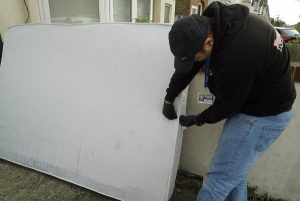
Buying or bringing home used furniture that is not inspected for bed bugs puts you at great risk of dealing with infestation. Used furniture is very often infested with crawling pests. This is one of the main reasons why people want to get rid of it in the first place – bed bugs treatment may cost more than buying a new piece of furniture.
Making sure it’s safe
Follow these steps to make sure the fitment is safe to become part of your new interior design:
- Get the necessary tools: flashlight, magnifying glass, gloves and a white sheet or nylon to put the furniture on.
- Turn the used furniture over the white blanket, if it’s not bed bugs-free, you’ll instantly spot some insects dropping on it.
- Run a credit card or an alternative thin fabric through any edges and cracks.
- Inspect your gloves before finishing the revision, better pack them inside a plastic bag and never trash them in the bin. Do not take the risk of reusing the same gloves.
- Do not bring used furniture home if you find signs of bed bugs in it.
How to Check a Mattress For Bed Bugs?
This is an essential step in identifying the bed bugs, so we found it necessary to provide you with some detailed tips on the process.
Take your time and don’t rush it. Inspecting the mattress is of great importance, many would not look any further if they don’t spot bugs on the mattress.
- Start with the bottom seams and continue with the material, sewn into the edges
- Take a look at the air holes and the handles of the mattress, if there are any
- Check the box spring or the platform, based on the type of your mattress
- Treat any black/brownish spots with alcohol-containing liquid. If the spot becomes red, this means its blood from the bed bugs’ droppings
- Proceed with the inspection in case other signs of bed bugs occur
Read about Bed Bugs On Mattress – What To Do Now?
Checking the Box Spring
The box spring of the mattress may be a bit hard to inspect. Follow these steps to make it easier:
- Lift the mattress carefully
- Turn over the box spring and uncover it by removing the cloth on the underside
- Pay attention to the spring frame parts where bed bugs are usually found
- Use a credit card to see if there are bed bugs between the separate box spring frame parts.
Bed Frame And Headboard Inspection For Bed Bugs
Wooden beds are more often flooded with bed bugs than metal ones. Wherever a mattress makes contact with a frame, the chances of seeing bed bugs are higher. Bed frames and headboards should be the first places to check in any bed.
- Start the inspection by probing joints where parts meet
- Disassemble the bed if necessary
- Inspect the lower side of the bed frame
- Detach the headboard for easier inspection of the hole part
- The top parts of the wooden support provide shelter for bed bugs – check this spot too
Want a professional to inspect the area?
Consider that we only provide some useful tips on how to inspect for bed bugs activity. We cannot take responsibility if the above recommendations don’t work.



